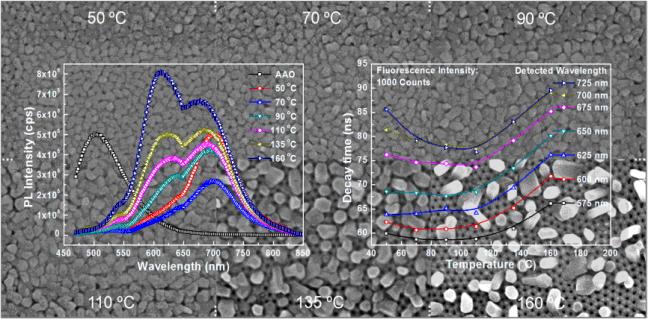Oct 16,2017|By
Researchers in High Magnetic Field Laboratory, Chinese Academy of Sciences (CHMFL) in Hefei explored the exciton transition (ET) mechanism and successfully modulated ET in crystalline nanostructures of organic semiconductor.
The phoptphysics of organic semiconductor relate closely to ET, therefore, the modulation of ET has great significance for photophysical property enhancement of organic semiconductor.
Until now, people have achieved ET modulation by means of applying high pressure and re-annealing processes, however, how to modulate ET in a simple manner remains a great challenge.
During the past two years, Dr. HAN et. al., have systematically investigated the preparation and morphology control of crystalline nanostructures of organic semiconductor (Nano Research, 9, 7, 2016, 1948; Nanoscale, 7, 40, 2015, 17116).
Herein, they prepared perylene-3,4,9,10-tetracarboxylic dianhydride (PTCDA) nanostructures, modulated the morphologies and molecular orientation of those prepared nanostructure.
They found that as the nanostructures coalesce together, the low energy emission dominates the PL spectrum. With the formation of the dispersed grains and nanorods, the high energy emission emerges gradually and can finally dominate the PL emission.
Accompanying the orientated growth of grains, the reduced coalescent degree of PTCDA grains promotes the amount of the grain surface molecules which have not orientated without delay. This arouses the initial decrease of fluorescence decay.
Following increased orientation of the surface molecules, PTCDA nanorods present the angular morphologies and the fluorescence decay increases dramatically.
The above results can be served as experiment guidance for the photophysical property modulation of organic semiconductor and the performance enhancement of the organic light-emitting devices.
This work entitled Modulation of Exciton Transition in Crystalline Nanostructures of an Organic Semiconductor was published online in Journal of Materials Science.
This work was supported by the National Natural Science Foundation of China, Natural Science Foundation of Anhui Province.
 |
|
The figure illustrates SEM images of the nanostructures prepared at different temperatures, the insets respectively present the photoluminescence (Left) and fluorescence decay (Right) spectra. |
Attachments Download: